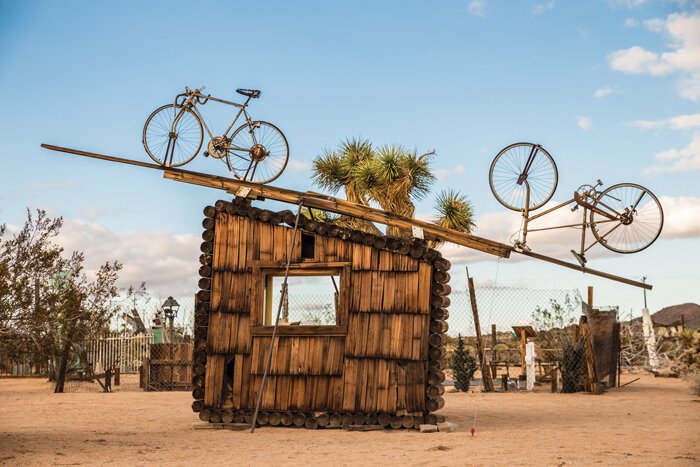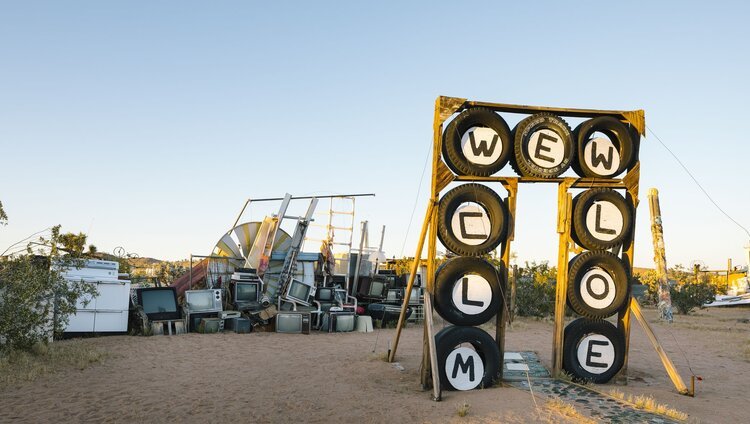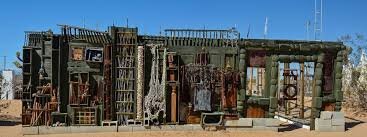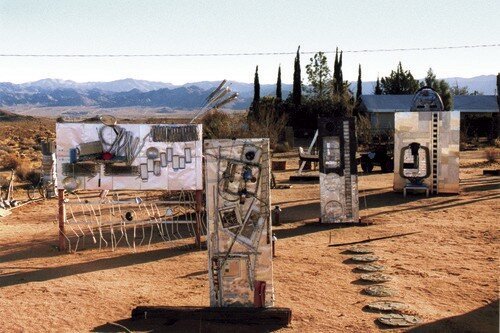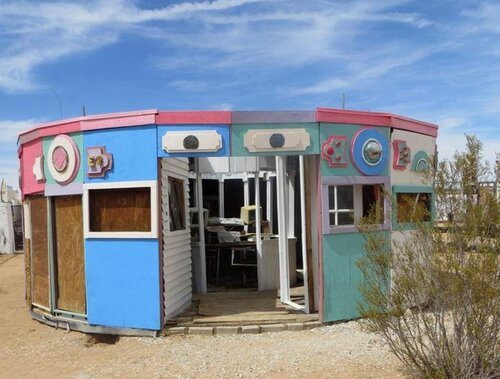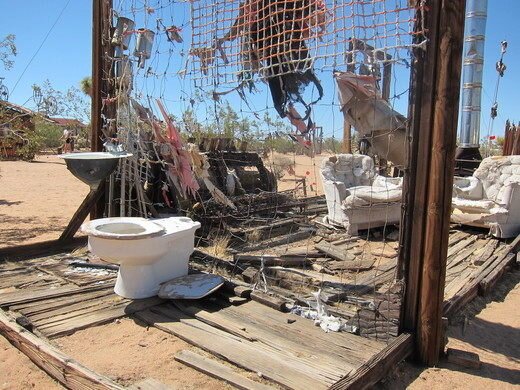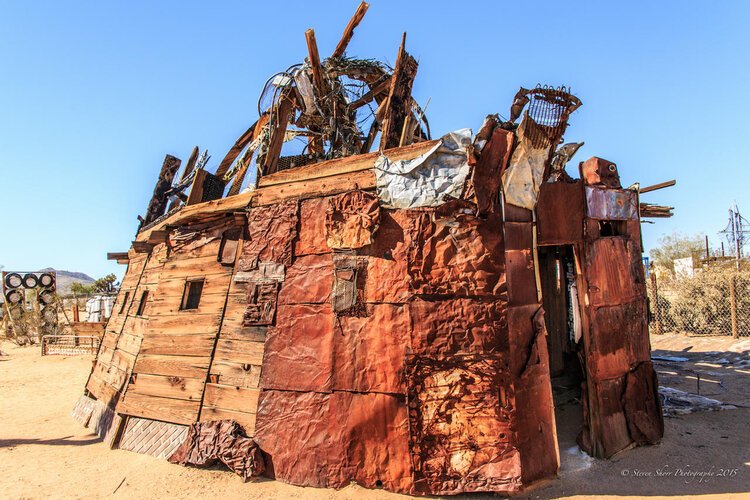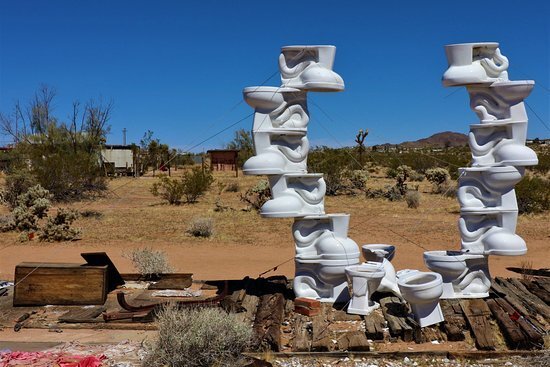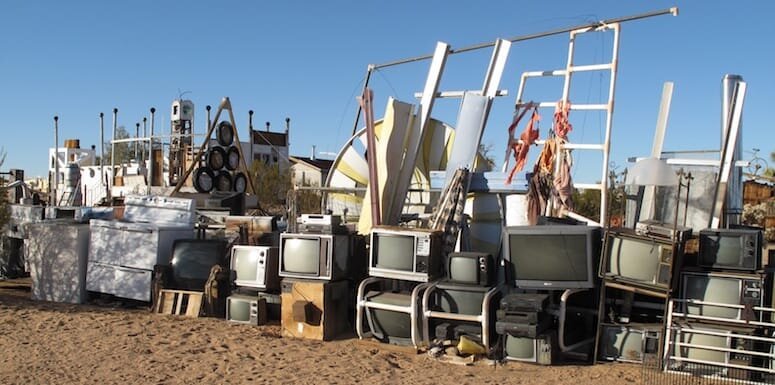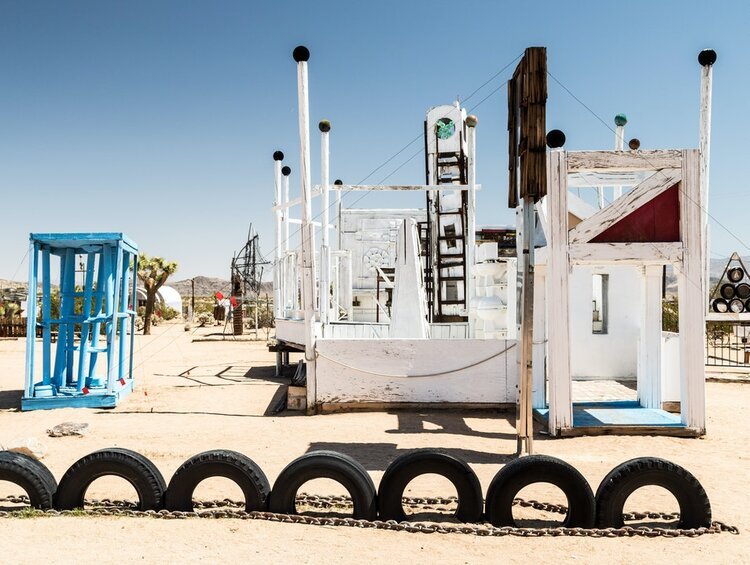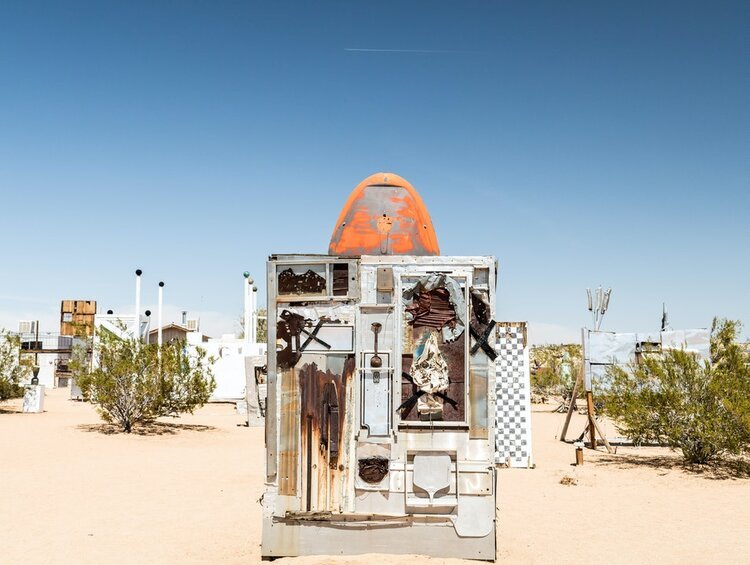Monday Muse: Noah Purifoy
The days are getting longer, but things are still pretty cool down in Southern California. The mornings are gray and the evenings are chilly. It’s the perfect time to head out to the desert from the healing that only the desert can provide. Lucky for me, I live only about a two hour drive from Joshua Tree. Joshua Tree is home to counterculture art galleries, amazing vintage shops, geodesic dome houses, and the Noah Purifoy Outdoor Museum.
Going to Noah Purifoy’s Outdoor Museum is almost like visiting another planet. It is rare to see someone else there. There is no ticket booth, no building, no front door really, just a pathway to enter the grounds. The assemblage sculptures are scattered around. You can touch them, walk on them, and go into them. The desert is a harsh landscape and background. Lizards can be seen slithering through the sand or resting in the shade of the sculptures. Sand is blown into the sculptures and you can see the natural decay of the sculptures from being outside. They are sun bleached, dirty, and raw. All of the sculptures are made of a patchwork of found materials like wood, toilets, computers, clothes, bowling balls, and metal siding.
Noah Purifoy (1917-2004) is an American artist and sculptor best known for his assemblage sculpture work made from the charred debris of the Watts Riots in 1965. Notably, Purifoy was the first African American to enroll and receive his BFA from CalArts in 1956.
After the Watts Riots, Purifoy, along with fellow artist Judson Powell, created the exhibition 66 Signs of Neon that utilized salvaged debris from the riots to create sculptures as a way to “interpret the August event”. Following the success of 66 Signs of Neon, Purifoy dedicated his career to working with found objects and using art as a tool for social change. In 1989, he moved out to Joshua Tree and began creating the sculptures that would come to be known as the Noah Purifoy Outdoor Museum.
Being at the museum, in the sun and the sand, is a cleansing experience. Examining the alien world built from familiar things makes me feel like I am seeing the world in a new way every time. These sculptures reference Duchamp and the Dada movement, which is one of my favorites as well.
For this week’s challenge, I want you to get out into nature and cleanse yourself. Feel anew. Examine familiar things in a new way. Write about your feelings in an art journal page. I’ll be sharing mine later in the week. I hope you enjoy looking at these sculptures and if you’re in Southern California, I highly recommend going out to the desert to see them yourself.

